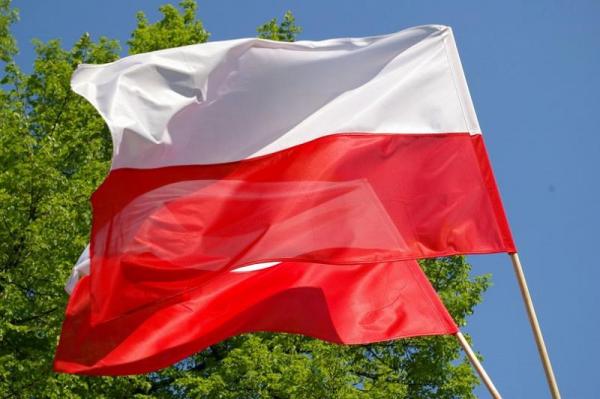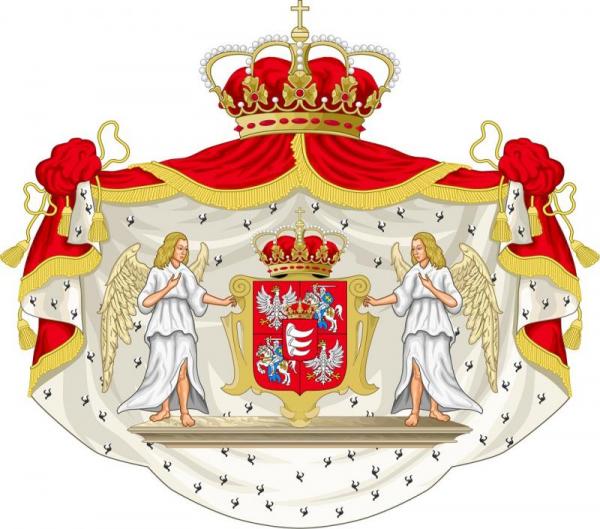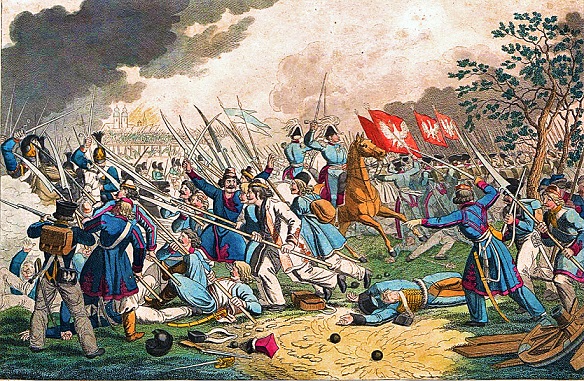
The white and red colours of the Polish national flag derive from the colours of the coat of arms of the Crown of the Kingdom of Poland – a white eagle against a red background. This symbol, in different variants, was known at least from the beginning of the 13th century. It accompanied the Piast families from Wielkopolska, Małopolska, Mazovia and Silesia... Therefore, it is all the more difficult to believe that the Polish flag will only celebrate its 100th birthday on 1 August 2019.

On 2 May, the Poles celebrate its National Flag Day. Established 15 years ago, in 2004, this special day aims to popularise knowledge about Polish identity and national symbols. Officially, these two colours began to function only during the November Uprising. This is because different banners were used simultaneously in the Middle Ages. Dukes and later kings had their own (often it was the White Eagle against a red background, but not always), and knights or individual lands had their own. The personal symbolism of the ruler gradually transformed into the state’s domain in order to achieve its richest form during the Jagiellonian era. Here, on a piece of fabric consisting of three bands of equal width – red, white and red – a five-field coat of arms was placed: quartered with each other two White Eagles and two Pogoń Litewska coats of arms, with an additional shield depicting an ancestral coat of arms of the ruler (a double Jagiellonian cross, Stephen Báthory’s Dragon Teeth or Vasa’s wheatsheaf) placed in the middle. This banner was for the then mighty Poland a symbol as precious as the Crown of St. Stephen was for the Hungarians.

The Colours of Slavs
At the end of the 18th century, on the wave of the French revolution and the new French flag – the tricolour – a combination of white, red and navy blue or dark blue, the pre-partition Poland also began to use this combination of colours. Interestingly, this colour combination is considered common to all Slavic people (the Pan-Slavic flag) and currently most of the Slavic countries (or nations) have three-coloured flags with different colour layouts: white – red – blue (sometimes navy blue): the Czech Republic, Croatia, Russia, Slovakia, Slovenia, Serbia, Republika Srpska, and the Sorbs. Historically, however, the white-and-red flag is a Czech flag and is still considered to be the flag of Bohemia. The blue colour on the national flag of Poland’s southern neighbours appeared only after the establishment of Czechoslovakia, and then remained there as a reference to Moravia. Also, the three horizontal bands on flags are a Central European speciality. All we need to do is to compare the flag of Hungary, Romania or Bulgaria...
The birth of contemporary colours
The combined colours of white and red are linked to the celebrations surrounding the first anniversary of the Constitution of 3 May 1791. Ladies demonstrating their patriotic attitude attended events or took walks in parks wearing white dresses adorned with a red sash. Men, on the other hand, wore white and red sashes. It is no coincidence, therefore, that the Flag Day is celebrated on 2 May, the day before the May Constitution Day.
With the establishment of the short-lived Duchy of Warsaw (1807-1815), along with the constitution, Napoleon gave this dependent state... a white and red flag. These colours were also mentioned in the act of the insurgent Sejm of the Kingdom of Poland from 1831, at the time of the November Uprising: “The lower and upper houses of the Polish parliament, having listened to the conclusions of the Sejm Committees and having considered the necessity to establish a uniform symbol to unite all Poles, have decided as follows: Article 1. The national cockade shall be the colours of the coat of arms of the Kingdom of Poland and the Grand Duchy of Lithuania – white with red. Article 2. All Poles, namely the Polish Army, are to wear these colours in the places where such symbols had been previously worn”. Later, the invaders of Poland, consciously or negligently, often used these colours interchangeably; however, more often citing as appropriate the reversed combination of red and white colours. On 3 May 1916, Warsaw saw for the first time a crowd of demonstrators wearing white and red flags manufactured in textile mills. The Industrial Revolution in the service of national awakening...

White and red since 1919
After Poland regained independence, the Sejm approved the white and red version of the flag with the act of 1 August 1919. The width-to-length ratio (5:8) specified in the act still applies. If these proportions differ, we can talk about national colours, but not the national flag. At the same time, during the interwar period, another national symbol was used – a white eagle against a red background.
This was the banner of the Republic of Poland. The banner was part of the insignia of Poland’s Head of State (Naczelnik Państwa), and later part of the presidential insignia. In 1927, the image of the White Eagle was altered (new design by Zygmunt Kamiński was adopted). The banner was also changed. It received a border of a wavy line used in the Polish military as a symbol of general’s rank (wężyk generalski) and embellished with galloons.
The act of 1919 also introduced the white and red flag with the coat of arms (white eagle against a red background) in the centre of the upper white band. It became established that on land this flag was used only as the flag of embassies and consulates, while at sea – as a merchant flag, and in a version with so-called swallowtails, the flag of the Polish navy.
Flag protocol
When the national flag is displayed with other flags, the principle of white-and-red privilege must be observed. If we put up or hang three flags, the Polish flag should be in the centre. When we have four flags, the Polish flag should be the first to the left of the viewer. If we have five flags, the Polish flag should be central. However, when there are six or more flags, the Polish flag should be at the beginning and at the end of the line. This order is dictated by the flag protocol which has been diligently prepared by Alfred Znamierowski on request of the Ministry of the Interior and Administration (MSWiA). Similarly, this protocol is used in local governments, where the correct order of the positioning of three flags is as follows – for three flags, from the left (for the viewer): the flag of a given local government unit (e.g. municipality or poviat), the flag of the Republic of Poland in the centre, and on the right – the flag of the local government unit of a higher level (poviat or province), or the EU flag.
Crimson, amaranth, vermilion
Over the centuries, the shade of red in Poland’s flag has been changing. Initially, it was crimson, but in the 19th century it was replaced by amaranth. It is said that the dye used for the uniforms of the army of the Duchy of Warsaw was imported from France. When combined with the ferruginous water from the Vistula, it was supposedly producing amaranth colour...
After Poland regained independence, crimson was accepted as the Polish colour red. In 1927, it was changed to vermilion, which applied until 1980. The colour was changed yet again in 1993. However, the national flag was never given the colour... of heraldic red!

These colours are not only ours
The Polish flag is not the only flag in Europe which uses the white-and-red design. Such a pattern can also be seen on the flags of the Czech Republic, Thuringia, Tyrol and Upper Austria, as well as many cities in Germany. Indonesia and Monaco have a similar flag to the Polish one; however, their colour layout is reversed (red-white). The coat of arms of Frankfurt am Main features a crowned white eagle against a red background, and on the flag, its right section is made up of two red and white bands.
Finally, it should be added that the flag day is celebrated in many countries around the world, including the United States, Mexico, Canada, Finland and Sweden. Also, the 2nd of May is also celebrated as the Day of Polish Diaspora and Poles Living Abroad.
Robert Szydlik
The author is a heraldist and member of a local government. His work to date includes coats of arms, flags, banners and seals for several dozen local governments in Poland. He has also designed medals (including the Western Cross, and “Pro Bono Poloniae” medal). Member of the Heraldic Committee at the Ministry of the Interior and Administration and the Numismatic Council of the National Bank of Poland.
